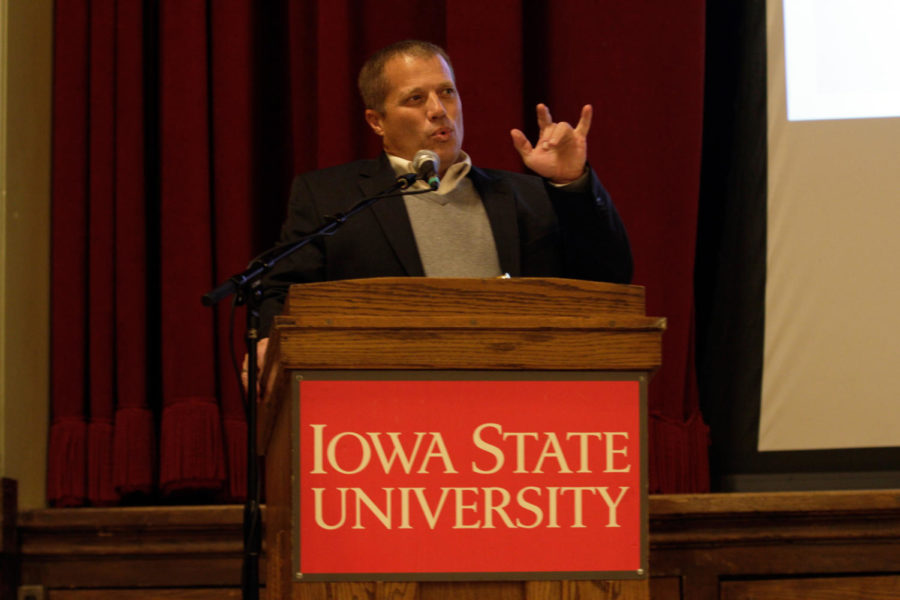Faculty Senate assembles, talks NCAA ruling, faculty recruitment
September 10, 2014
The ISU Faculty Senate met for the first time in the 2014-15 academic year Sept. 9 in the Great Hall of the Memorial Union.
The Faculty Senate has legislative responsibilities for educational policies and procedures, including curriculum. The single academic proposal to add a minor in leadership studies was announced and will be voted on at the next full Senate meeting Oct. 14.
The remainder of the meeting was aimed at updating the Senate with information pertinent to the its advisory function. The Faculty Senate advises the university administration and Board of Regents on matters of general welfare to the institution and faculty.
Tim Day, professor of biomedical sciences and ISU faculty athletics representative, presented new information about the academic performance of ISU athletes and changes in the NCAA rules governing college scholarships.
“These are pretty dynamic times at the NCAA,” Day said. “There have been some major changes brewing. One of the big ones is legislative autonomy.”
According to Day, there are presently around 340 schools under the NCAA umbrella. Those schools have athletic department budgets ranging from $3 million to $150 million, but had equal influence in the legislative process, creating conflicts.
On Aug. 7, the NCAA restructured the legislature to allow all 65 “power conference” schools in the Big 12, Big 10, SEC, ACC and PAC-12 greater autonomy in legislating themselves.
Day said the issue of “full cost of attendance” is being weighed against the traditional scholarship allocation of tuition, books, room and board. Previous to the NCAA ruling, smaller schools resisted the option to offer “full cost of attendance” scholarships.
“The difference between ‘cost of attendance’ and ‘[books], room, board and tuition’ at Iowa State is $2,340,” Day said. “Under the old rules, smaller schools were resistant to raising the scholarship limit to the ‘full cost of attendance’ because it would be very difficult for them to afford.”
Sen. Jonathan Sturm, professor of music and theatre, voiced concern about the fairness of scholarship athletes being given an extra stipend on top of their traditional scholarship.
“Is this leading us toward a fine-tuned multi-class system?” Sturm asked. “Athletes do extra things, but so do students in the chemistry lab. Is there a class that then gets preferential treatment? It’s a slippery slope.”
Currently, the ISU athletic department has not made an announcement or decision as to “full cost of attendance” scholarships.
Jonathan Wickert, senior vice president and provost, updated the Senate on President Leath’s High Impact Hires Initiative.
“We successfully completed what turned out to be a record year for faculty hiring,” Wickert said. “One hundred five tenured or tenured-eligible faculty were recruited in last year’s cycle.”
Wickert said $1.5 to $2 million will be invested again and he expects a similar number of new faculty hires this year. Wickert also reported that the Biosciences Building Project approved by the Board of Regents last year is on track to choose an architect. The project will include a new biosciences building and an addition to Bessey Hall.
The standards for faculty performance and post tenure review are also up for discussion in future meetings. Both are designed to help evaluate and guide tenured faculty.
Faculty Senate will reconvene from 4 to 6 p.m. Oct. 14 in the Great Hall of the Memorial Union.

















